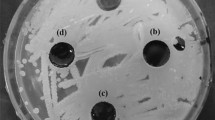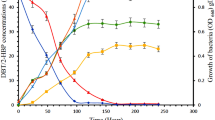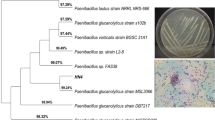Abstract
The burning of fossil fuels has released a large quantity of pollutants into the atmosphere. In this context, sulfur dioxide is one of the most noxious gas which, on reacting with moist air, is transformed into sulfuric acid, causing the acid rain. In response, many countries have reformulated their legislation in order to enforce the commercialization of fuels with very low sulfur levels. The existing desulfurization processes cannot remove such low levels of sulfur and thus a biodesulfurization has been developed, where the degradation of sulfur occurs through the action of microorganisms. Rhodococcus erythropolis has been identified as one of the most promising bacteria for use in the biodesulfurization. In this study, the effectiveness of the strain R. erythropolis ATCC 4277 in the desulfurization of dibenzothiophene (DBT) was evaluated in a batch reactor using an organic phase (n-dodecane or diesel) concentrations of 20, 80, and 100 % (v/v). This strain was able to degrade 93.3, 98.0, and 95.5 % of the DBT in the presence of 20, 80, and 100 % (v/v) of dodecane, respectively. The highest value for the specific DBT degradation rate was 44 mmol DBT · kg DCW−1 · h−1, attained in the reactor containing 80 % (v/v) of n-dodecane as the organic phase.


Similar content being viewed by others
References
Onaka, T., Konishi, J., Ishii, Y., & Maruhashi, K. (2001). Journal of Bioscience and Bioengineering, 92, 193–196.
Stanislaus, A., Marafi, A., & Rana, M. S. (2010). Catalysis Today, 153, 1–68.
Song, C. (2003). Catalysis Today, 86, 211–263.
Oyama, S. T., Gott, T., Zhao, H., & Lee, Y. (2008). Catalysis Today, 143, 94–107.
Gupta, N., Roychoudhury, P. K., & Deb, J. K. (2005). Applied Microbiology and Biotechnology, 66, 356–366.
Le Borgne, S., & Quintero, R. (2006). Fuel Processing Technology, 81, 155–169.
Oldfield, C., Wood, N. T., Gilbert, S. C., Murray, F. D., & Faure, F. R. (1998). Van Leeuwenhoek Journal Microbial, 74, 119–132.
Gray, K. A., Rhee, S., Chang, J. H., Chang, Y. K., & Chang, H. N. (1996). Abstracts of Papers of the American Chemical Society, 212, 54–58.
Kilbane, J. J., III, & Jackowski, K. (1992). Biotechnology and Bioengineering, 40, 1107–1114.
Monticello, D. J. (2000). Current Opinion in Biotechnology, 11, 540–546.
Folsom, B. R., Schieche, D. R., Digrazia, P. M., Werner, J., & Palmer, S. (1999). Applied and Environmental Microbiology, 65, 4967–4972.
Guchhait, S., Biswas, D., Bhattacharya, P., & Chowdhury, R. (2005). Chemical Engineering Journal, 112, 145–151.
Li, F., Xu, P., Ma, C. Q., Luo, L. L., & Wang, X. S. (2005). Applied and Environmental Microbiology, 71, 276–281.
McFarland, B. L. (1999). Current Opinion in Microbiology, 2, 257–264.
Maghsoudi, S., Vossoughi, S., Kheirolomoom, A., Tanaka, E., & Katoh, S. (2001). Biochemical Engineering Journal, 8, 151–156.
Yu, B., Ma, C., Zhou, W., Wang, Y., Cai, X., Tao, F., Zhang, Q., Tong, M., Qu, J., & Xu, P. (2006). FEMS Microbiology Letters, 258, 284–289.
Zhang, Q., Tong, M. Y., Li, Y. S., Gao, H. J., & Fang, X. C. (2007). Biotechnology Letters, 29, 123–127.
Davoodi-Dehaghani, F., Vosoughi, M., & Ziaee, A. A. (2001). Bioresource Technology, 101, 1102–1105.
Ohshiro, T., Hirata, T., Hashimoto, I., & Izumi, Y. (1996). Journal of Fermentation and Bioengineering, 82, 610–612.
Li, G. Q., Li, S. S., Qu, S. W., Ma, T., Zhu, L., Liang, F. L., & Liu, R. L. (2008). Biotechnology Letters, 30, 1759–1764.
Naito, M., Kawamoto, T., Fujino, K., Kobayashi, M., Marushashi, K., & Tanaka, A. (2001). Applied Microbiology and Biotechnology, 55, 374–378.
Debabov, V. G. (2010). Applied Biochemistry and Microbiology, 46, 733–738.
Setti, L., Lanzarini, G., & Pifferi, P. G. (1997). Fuel Processing Technology, 52, 145–153.
Acknowledgments
We are grateful to the following Brazilian Petroleum Agency program for financially supporting this study: Formação de Recursos Humanos da Agência Nacional do Petróleo, Gás Natural e Biocombustíveis-ANP, through PRH-09/MECPETRO.
Author information
Authors and Affiliations
Corresponding author
Rights and permissions
About this article
Cite this article
Maass, D., de Oliveira, D., de Souza, A.A.U. et al. Biodesulfurization of a System Containing Synthetic Fuel Using Rhodococcus erythropolis ATCC 4277. Appl Biochem Biotechnol 174, 2079–2085 (2014). https://doi.org/10.1007/s12010-014-1189-3
Received:
Accepted:
Published:
Issue Date:
DOI: https://doi.org/10.1007/s12010-014-1189-3




